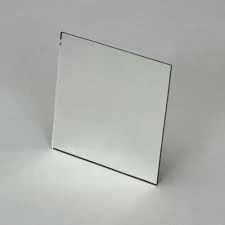

The Elegance and Functionality of Reflective Tempered Glass
In the world of architecture and interior design, materials play a crucial role in shaping not only the aesthetics but also the functionality of spaces. Among these materials, reflective tempered glass stands out as a favorite due to its unique characteristics and advantages. This article explores the attributes, applications, and benefits of reflective tempered glass, shedding light on why it has become an essential component in modern constructions.
Reflective tempered glass is a type of safety glass that undergoes a special heating process, making it significantly stronger than standard glass. The tempering process involves heating the glass to an elevated temperature and then rapidly cooling it. This procedure enhances its strength, making it more resistant to impact and thermal stress. As such, reflective tempered glass is less prone to shattering, providing safety and peace of mind for both builders and occupants.
One of the most striking features of reflective tempered glass is its ability to reflect light. The glass is coated with a thin layer of metallic oxide, giving it a reflective surface that can reduce glare and control solar heat gain. This characteristic makes it an ideal choice for buildings in sunny climates, where excessive heat can lead to increased energy consumption for air conditioning. By reflecting sunlight, the glass helps to maintain a comfortable indoor temperaturewhile also reducing energy costs, making it environmentally friendly.
In addition to its practical benefits, reflective tempered glass contributes immensely to the aesthetic appeal of a structure. Its reflective surface can create stunning visual effects, transforming the way buildings interact with their surroundings. For instance, the glass can mirror the skyline, trees, and sky in urban settings, allowing the building to blend harmoniously with nature. This visual versatility makes reflective tempered glass a popular choice for both commercial and residential applications.

Architects and designers frequently use reflective tempered glass in facades, windows, and doors. High-rise buildings, in particular, benefit from its use because it creates a uniform, sleek appearance while also providing natural light to interior spaces. The glass can also enhance views, allowing occupants to enjoy the environment outside while maintaining their privacy. This is especially valuable in densely populated areas where buildings are situated close together.
In addition to commercial buildings, reflective tempered glass is gaining popularity in residential design. Homeowners are increasingly looking for ways to enhance their living spaces while also improving energy efficiency. Reflective tempered glass can be incorporated into sliding doors, patio windows, and skylights, allowing light to flood into homes without compromising privacy. Homeowners appreciate the modern touch it brings, as well as its ability to reduce glare and heat from the sun.
Beyond aesthetics and energy efficiency, reflective tempered glass is also a sustainable choice. As architectural trends lean towards eco-friendly designs, this material plays a crucial role. By reducing the need for artificial lighting and decreasing reliance on heating and cooling systems, reflective tempered glass contributes to lower carbon emissions. This aligns with the principles of sustainable design, making it a responsible choice for environmentally-conscious builders and homeowners.
However, it's important to consider some challenges associated with reflective tempered glass. One of the main concerns is the potential for excessive heat build-up in certain conditions, which can lead to thermal stress. Proper engineering and building design can mitigate these risks, ensuring that reflective tempered glass is used effectively and safely.
In conclusion, reflective tempered glass is a remarkable material that combines beauty, safety, and efficiency. Its ability to enhance the aesthetic appeal of buildings while providing practical benefits makes it an invaluable resource for architects, designers, and homeowners alike. As we continue to pursue sustainable building practices, the role of reflective tempered glass is likely to become even more significant in future architectural endeavors. In a world increasingly focused on energy efficiency and design innovation, reflective tempered glass will undoubtedly remain a popular choice for structures across the globe, elevating both the look and function of modern spaces.